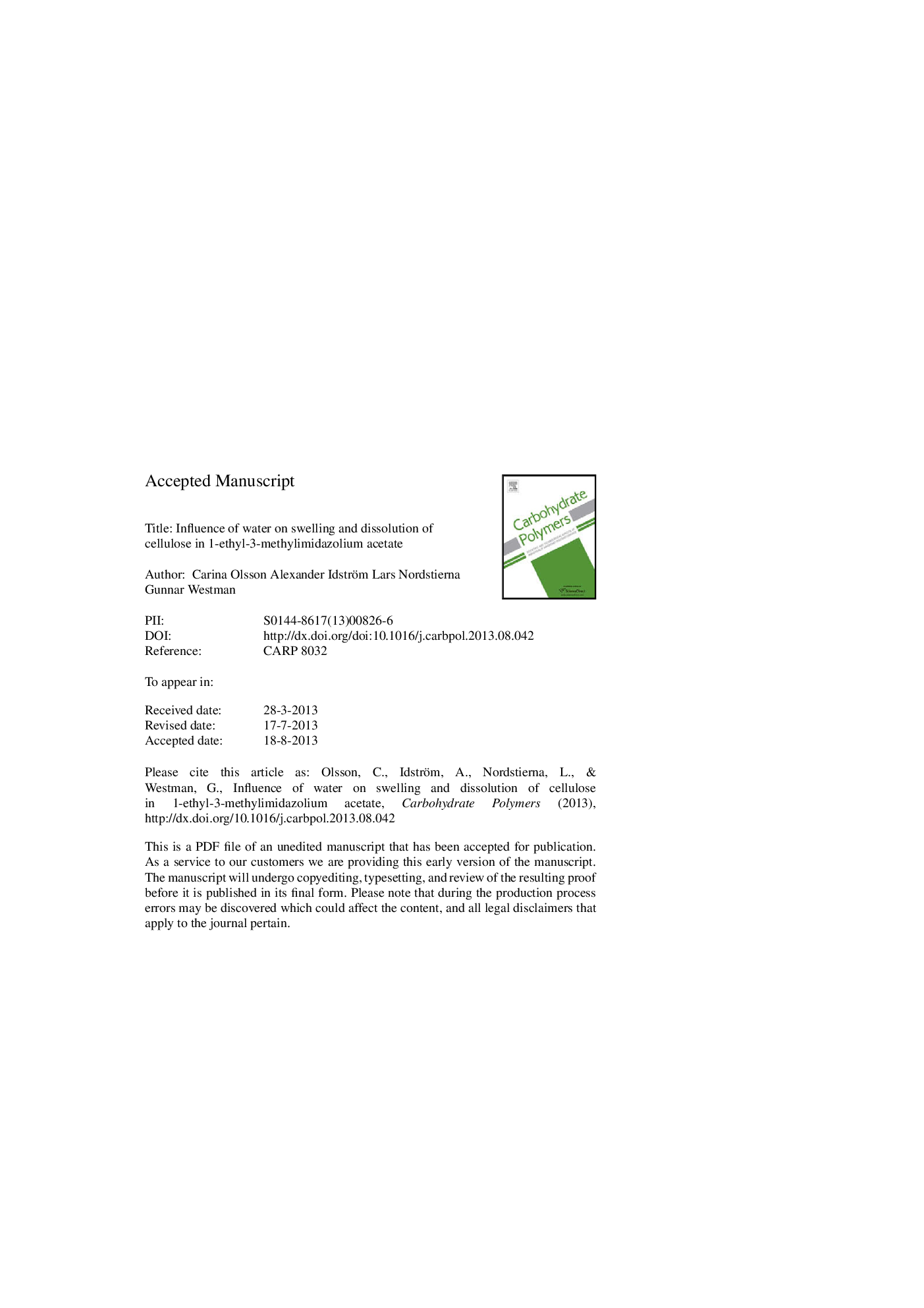| Article ID | Journal | Published Year | Pages | File Type |
|---|---|---|---|---|
| 7793555 | Carbohydrate Polymers | 2014 | 18 Pages |
Abstract
In this study the effect of residual coagulation medium (water) on cellulose dissolution in an ionic liquid is discussed. Solubility of dissolving grade pulp; HWP and SWP, and microcrystalline cellulose in binary solvents, mixtures of 1-ethyl-3-methyl-imidazolium acetate and water, was investigated by turbidity measurements, light microscopy, rheometry, and CP/MAS 13C-NMR spectroscopy. The viscoelastic properties of the cellulose solutions imply that residual water affect the cellulose dissolution. However, it is not obvious that this always necessarily poses serious drawbacks for the solution properties or that the effects are as severe as previously believed. Turbidity measurements, viscosity data and crystallinity of the regenerated cellulose correlated well and an increased conversion to cellulose II was found at low water and cellulose contents with an apparent maximum of conversion at 2-5Â wt% water. At high water content, above 10Â wt%, dissolution and conversion was largely inhibited.
Related Topics
Physical Sciences and Engineering
Chemistry
Organic Chemistry
Authors
Carina Olsson, Alexander Idström, Lars Nordstierna, Gunnar Westman,
